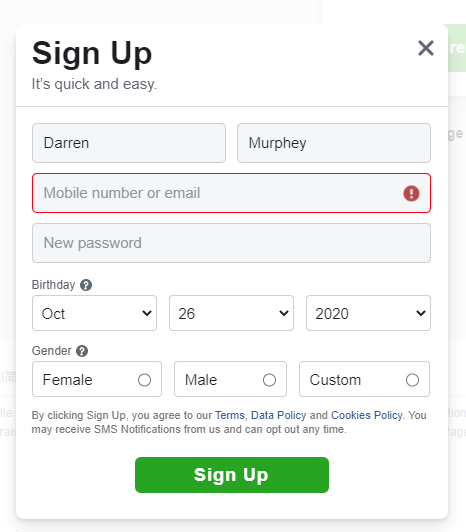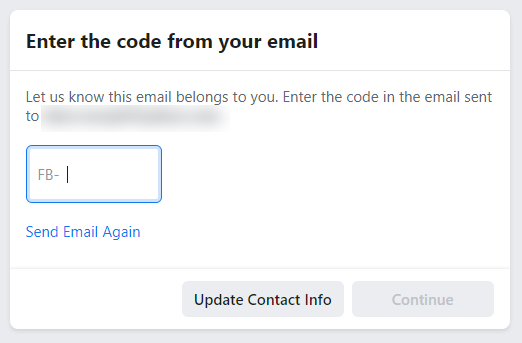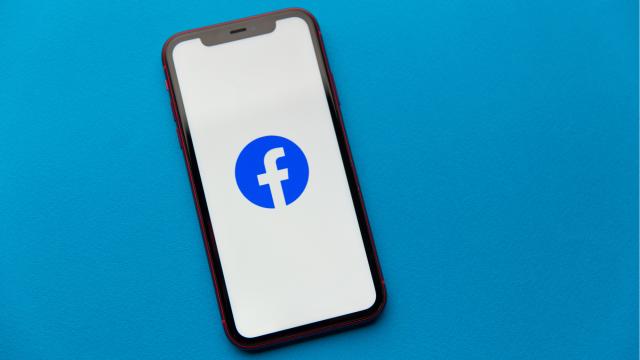Creating multiple Facebook accounts was easy back in the day. You might have needed a secondary email from a legitimate educational institution, but that’s typically not difficult to come by — especially if you get a new “alumni” email address tied to a university’s domain upon graduating.
Nowadays, if you try to make a new Facebook account you’ll have to jump through many more hoops due to the mechanisms Facebook uses to prevent people from breaking its Terms of Service. Why would you even want another Facebook account, though? Before all the “delete Facebook!” Kinja commenters pile into this article, there are actually a few decent reasons why you might need a “Fakebook.”
Stop being the real you on Facebook
The first and most obvious reason is that a fake account allows you to disassociate yourself from all the information Facebook has stored on you. Sure, deleting your Facebook account and starting over might work, too — if you can even do that. I confess, I’ve never tried deleting my account outright and seeing if I can set up a new one with the same email address and phone number. Knowing Facebook, I suspect that is probably very difficult to do, if not impossible.
You won’t be able to escape all the different ways Facebook finds out who you are if you use a dummy account, including what you use to browse the site and where you’re located, but you can at least disassociate key identifiers from Facebook’s grasp. These include your real email address, phone number, relationships, contacts, who you talk to, interests, and so on.
Ditch Facebook’s distractions (and annoyances)
With a Fakebook account, you can control exactly what you see in your feed. You’ll no longer be triggered by the stupidity of your friends’ political beliefs, nor will you have to look at endless streams of pet photos and/or new-baby updates. Since you won’t be friending anyone on your bogus account, you can basically turn it into an RSS reader of sorts for other entities you care to know about: when your favourite band announces its next tour, when a particular creator releases a new set of Dungeons & Dragons dice, or when there’s a sale at a particular local business.
Use Facebook’s hardware
I’m sure you’ve read about Facebook’s byzantine rules for its Oculus hardware by now. If not, here’s the short version: You’ll have to link a Facebook account to your virtual reality headset to use it. Yes, that’s a completely absurd policy, but that’s the new normal as far as the Oculus goes.
Of course, this also means that you can’t tie your Oculus headset to a Facebook account and then delete said account when you’re no longer interested in having a social profile. Do that, and you’ll lose all the apps you bought for your headset, and you will be unable to purchase any more. If your Facebook account ever gets removed by Facebook for violating its Terms of Service, your Oculus headset will suffer a similar fate.
But, hey, at least you can now use multiple headsets with one Facebook account and not get banned. Sigh.
Using the same Facebook account on two or more Oculus headsets simultaneously will NOT get your account “banned.” Having the same account registered to two or more headsets is not against the Facebook Terms of Service.
— Meta Quest Help (@MetaQuestHelp) October 25, 2020
How do you create another Facebook account?
Here’s the tricky part. Facebook has gotten a lot better about account verification nowadays, and if it suspects you’re up to something, it’s not going to let you create a secondary account. What do I mean? Well, let’s walk through the process.
Since we’re trying to keep things super-anonymous, I started by pulling up an Incognito window in my browser. Before we begin, one quick note: I’m not running my traffic through a VPN to further disassociate my real IP from Facebook. It’s not a bad idea, but I suspect Facebook also knows quite a few VPN IP ranges, making the point moot.

Facebook asks you for the usual laundry list of details. I would advise you to use a different name, email address, and birthday than whatever you use for your real Facebook account. Don’t use a phone number. Seems prudent, right? You’ll then get sent a code to verify your email:

If you’re lucky, that’s it! That’s all you’ll have to do to get your brand-new account up and running. However, it’s also possible that Facebook might ask for additional verification that you are who you say who are before it lets you run wild on its service, which can include uploading a headshot to verify you’re a real person. Presumably, Facebook runs this through its facial-identification tools and if the company deems that said image is already associated with another Facebook account, you’re out of luck.
What do I mean by that? I don’t work at Facebook, but I can only assume that the company’s tool is looking for obviously fake images — such as trying to con Facebook that an image of Sylvester Stallone is actually you — or looking to match your image with multiple images from any other account on the service. So, if you try to game the system by using a friend’s picture, but Facebook already has plenty of images of that person’s face associated with another account, you’re out of luck.
You have a secondary Facebook account. Now what?
As I mentioned, Facebook is pretty good about constructing profiles of who you are based on all kinds of information that you might not even know you’re providing to the company. Case in point: Even in an incognito browser window, which shouldn’t be able to access anything else I do in my regular browser, Facebook still knew there was some kind of correlation between my secondary account and my primary account. As a result, it suggested that I look into befriending some of my primary account’s friends — which shouldn’t be possible if this was truly a brand-new account created in “anonymity” — and had very me-specific suggestions for how I might want to fill out the initial details of my profile.
If that doesn’t already get your hair on edge, it should. Because if you’re using a secondary Facebook account, you’re going to want to be absurdly diligent about keeping your life as separate as possible across the two. If Facebook makes the association that fake you is real you, it will more than likely ban the fake account and possibly take action against your real one.
What does this mean? Well, put on your tin-foil hat. If I was using a fake account on Facebook, here’s how I’d set it up:
- I’d associate said fake account with a device I’ve never previously used to interact with Facebook — like an older smartphone.
- I’d enable a VPN whenever I access Facebook on this device (and you can’t slip up, or else Facebook will start to clue in that you’re accessing the account from the same place as your normal Facebook account)
- Just in case, I’d pick a VPN server that’s near where I normally live. (All we care about is the different IP address.)
- I wouldn’t do anything on my fake Facebook account that I otherwise do on my real one. Don’t friend yourself. Don’t friend your friends. Don’t associate identifying details — like the same phone number — to two accounts.
- I would disable every feature or service on my Fakebook account that I knew I wouldn’t be using. That includes the ability for anyone to see you’re online, tag you in any photos without your approval, send you friend requests, or even look up who you are based on other identifying information like your email address or phone number. Basically, the goal is to remove, disable, or hinder as much of Facebook’s normal social functions as you can.
- I wouldn’t associate this Facebook account with any other service. Don’t use it to log into anything. Don’t play games on it. Don’t do anything with it. It’s a glorified RSS reader; nothing more.
- I’d “use” the account in the sense that I might fill the profile with reasonable, albeit dummy information so it doesn’t look spammy. But, please, do not upload a picture of you to your fake account. Don’t upload anything.
Basically, assume that your new Facebook account could go away at any time. As part of that, I would advise not linking to your new virtual-reality headset if you’re actively using another primary Facebook account. The risk, to me, seems too great. You don’t want to lose access to all the games you’ve paid for if, or when, Facebook figures out your little scheme.
I think you can be a little more liberal about using your new account if you’ve previously deleted your old, primary Facebook account. I can’t envision Facebook would freak out about that very much, but that’s just an assumption on my part. Besides, if you quit Facebook once, why would you want to start up a brand-new profile again? Just reactivate the old one and delete friends, groups, associations, or whatever else you need to prune it however you want. Annoying as it is, at least you won’t have to worry about Facebook wiping both accounts out of the blue one day.

Leave a Reply
You must be logged in to post a comment.